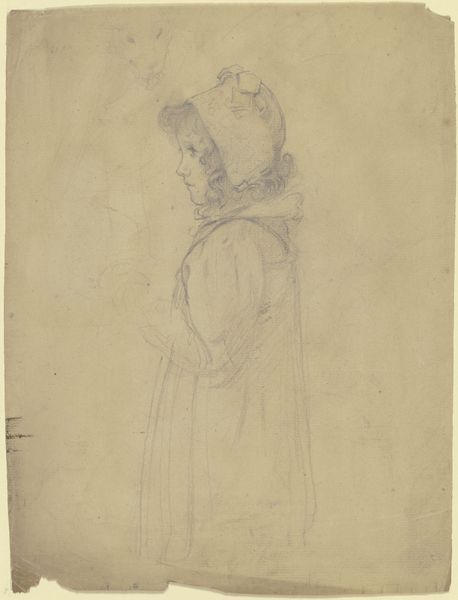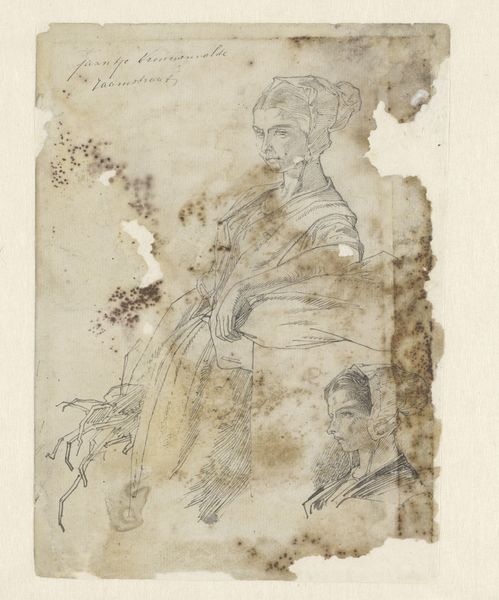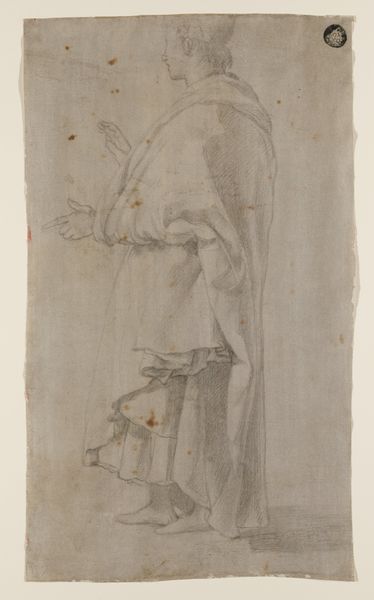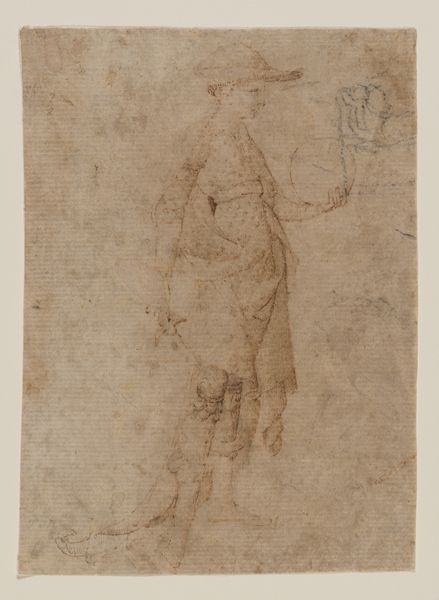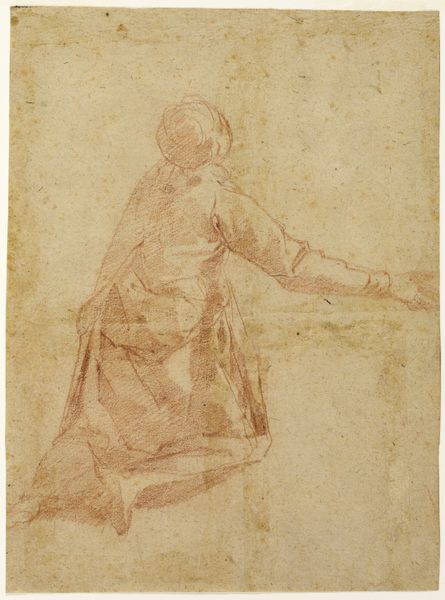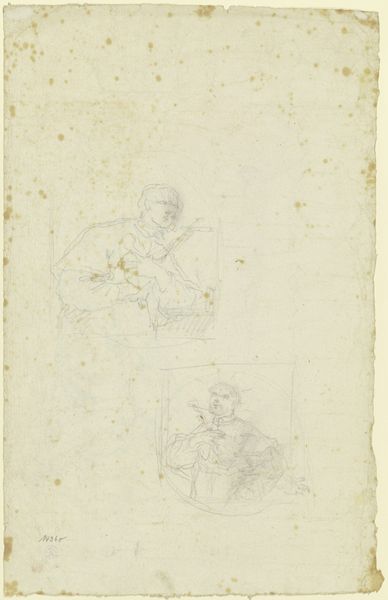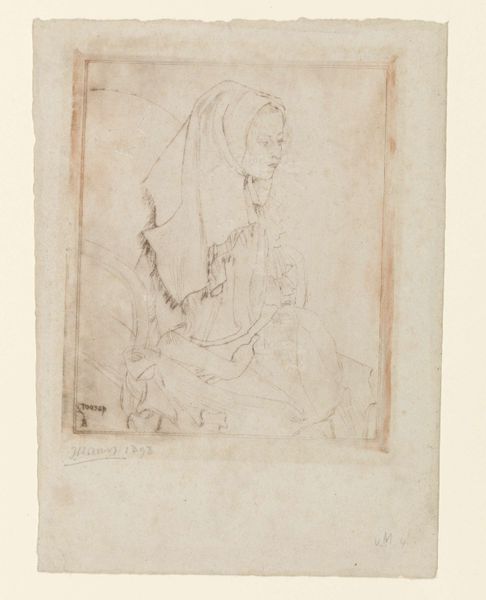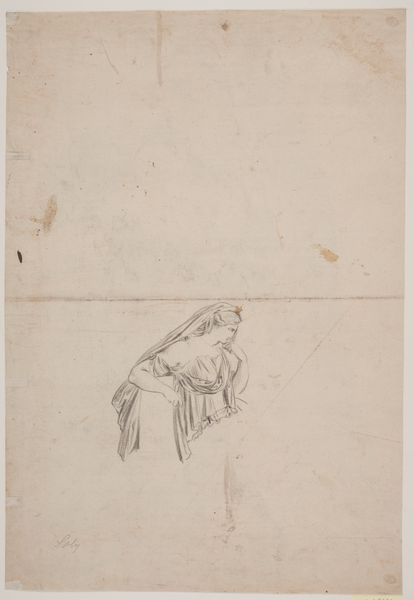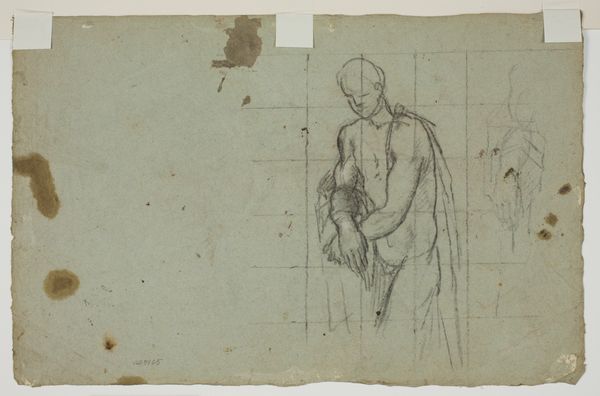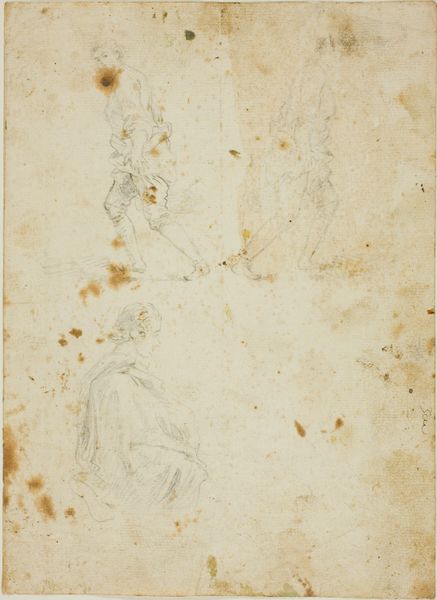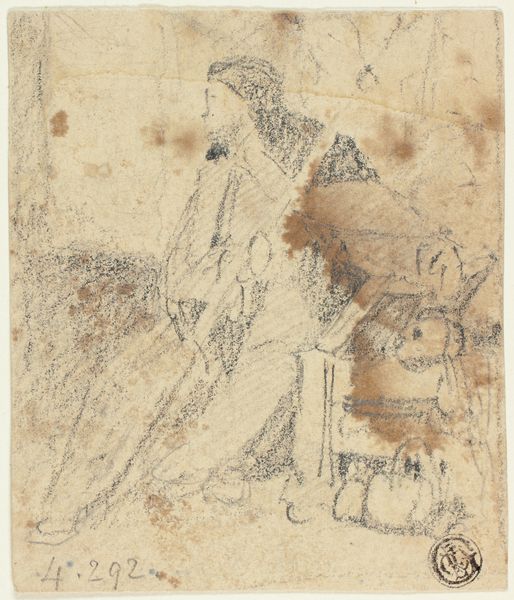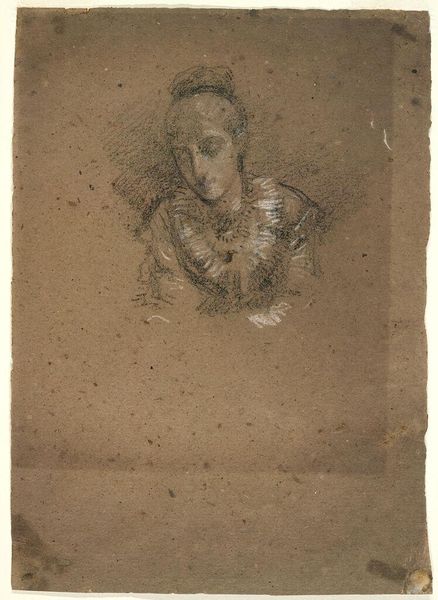
Standing Figure of Saint Stephen and the Head of Another Figure Within the Framing Outlines of a Rectangle, Crude Sketch of the Head of Another Figure, Undecipherable Sketch of a Polygonal or Circular Object with Small Projections 1492 - 1494
0:00
0:00
drawing, paper
#
portrait
#
drawing
#
figuration
#
paper
#
11_renaissance
#
line
#
early-renaissance
Dimensions: 11 7/16 x 8 7/16in. (29 x 21.5cm)
Copyright: Public Domain
Curator: This drawing, tentatively titled "Standing Figure of Saint Stephen and the Head of Another Figure Within the Framing Outlines of a Rectangle, Crude Sketch of the Head of Another Figure, Undecipherable Sketch of a Polygonal or Circular Object with Small Projections" comes to us from Domenico Ghirlandaio's studio, likely dating between 1492 and 1494. It's an early renaissance work executed in pen and brown ink on paper. Editor: My first impression is of tentative exploration, with spare, lean lines that evoke a sense of underlying uncertainty despite the subject’s seeming regality. Curator: It's interesting you pick up on that. Ghirlandaio was a key figure in the Florentine Renaissance, running a workshop known for its efficiency. These sketches provide us insight into artistic processes in that era and how ideas developed and circulated within the workshop. Editor: Right, there is a visual dialogue here: The repetition of heads, one framed, and others looser suggest stages in development of a finalized pose or idea. Note, also, the texture of the paper. Its stains give the impression that it has seen time! Curator: Exactly, the state of the paper is quite remarkable, isn't it? It underscores the material conditions that determine the survival of drawings such as these. Renaissance workshops weren’t concerned with preserving everything. Editor: The looseness of the lines also contribute to a sense of fluidity. There's an emphasis on the preliminary that opens the picture’s plane and prevents any formal foreclosure. Curator: Which could have impacted their understanding and interpretation. This makes the viewer today much more involved, creating opportunities for unique perspectives that were perhaps less evident at the time. Editor: So, it transforms a potentially dry archival document into something vital and relevant today? Curator: Precisely, offering insight into the complexities of Renaissance workshops while creating a fresh encounter for the contemporary audience. Editor: An intriguing journey—from the pragmatic necessities of artistic production to the potential for dynamic interpretation centuries later!
Comments
No comments
Be the first to comment and join the conversation on the ultimate creative platform.
